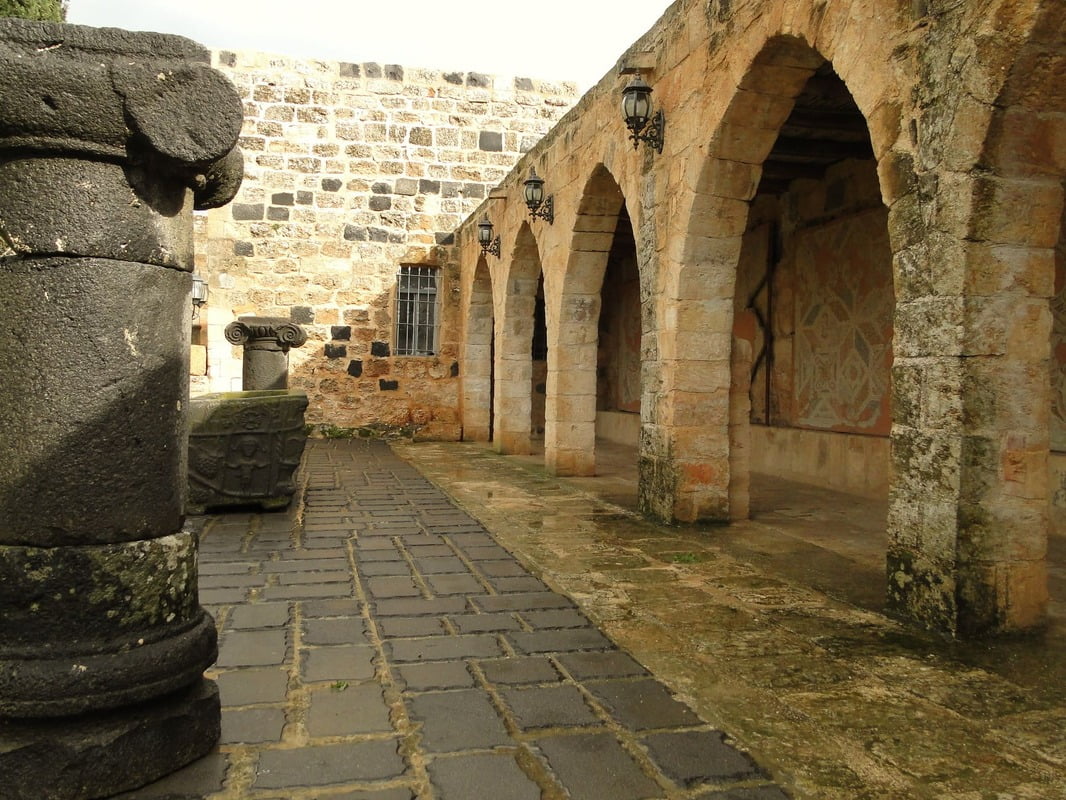Um Qais

Um Qais Museum
The museum, which is located in one of the houses in the Ottoman village of Um Qais, composed of two exhibition halls. In the first hall, various ceramics dating from the Hellenistic up to the Islamic periods are on display, along with finds from the tombs at Um Qais.
The second hall is dedicated to statuary, mostly from the Roman period. Into the large courtyard, basalt sarcophagi, column capitals and bases, two basalt gates, mosaics and the famous seated Tyche were moved from the site.
Um Qais Archeological Site
Um Qais (Gadara), built using stunning black basalt stones, was one of the cities of the Decapolis, planned with a Roman city layout. The Ottoman village on top of part of the ancient city was acquired by the Department of Antiquities who now has several excavation and conservation projects at the site, including the restoration of the main (west) theatre.
The location of Um Qais is particularly significant. Visitors to the site can view the Syrian Golan Heights, Mount Hermon, Lake Tiberias and the north Palestinian plains.
